-
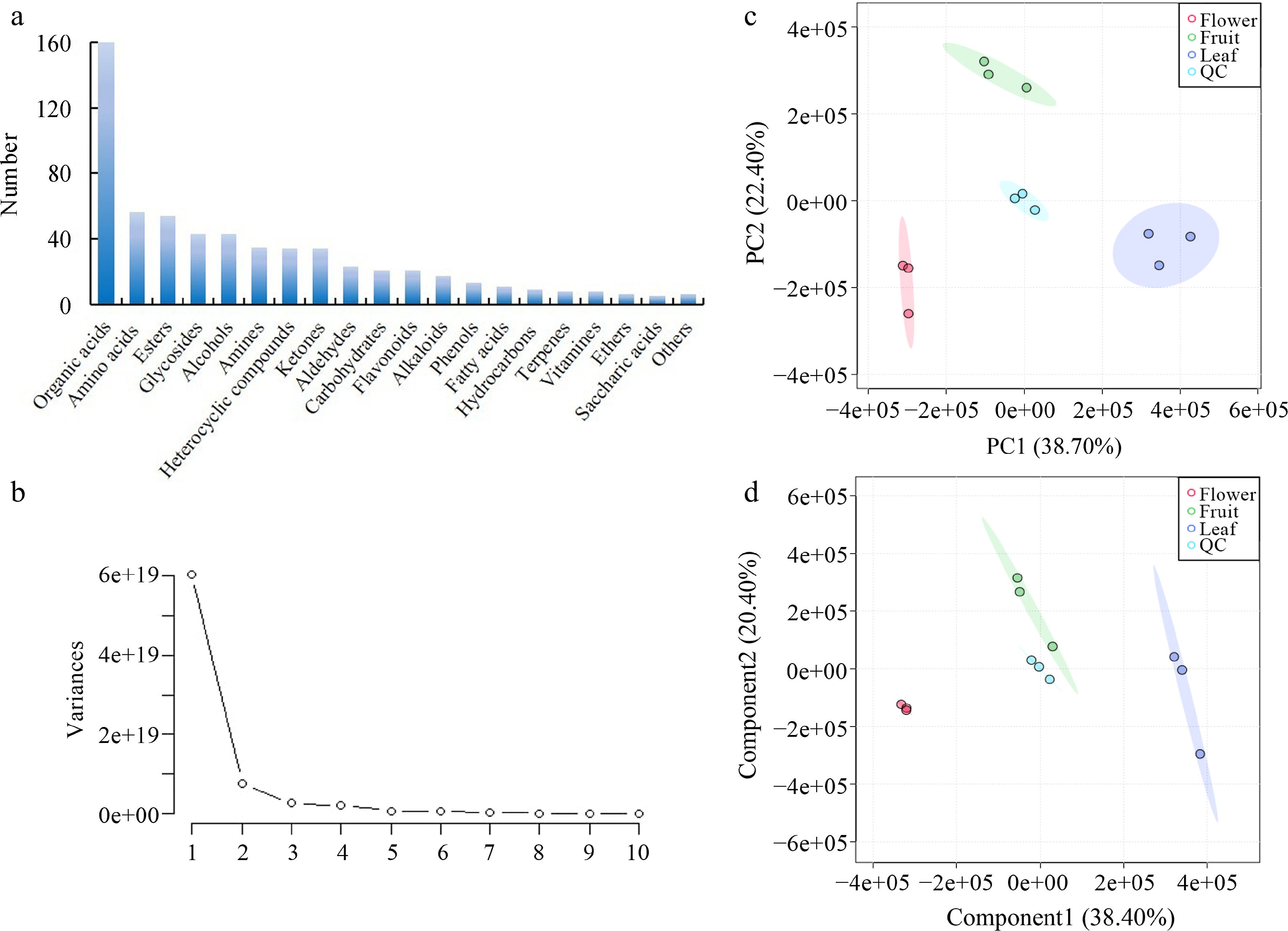
Figure 1.
Overview of the metabolites in three types of tea made from olive leaves, flowers, and fruits. (a) Classification of the metabolites; (b) scree plot of the metabolites; (c) PCA plot of the metabolites; and (d) PLS-DA plot of the metabolites.
-
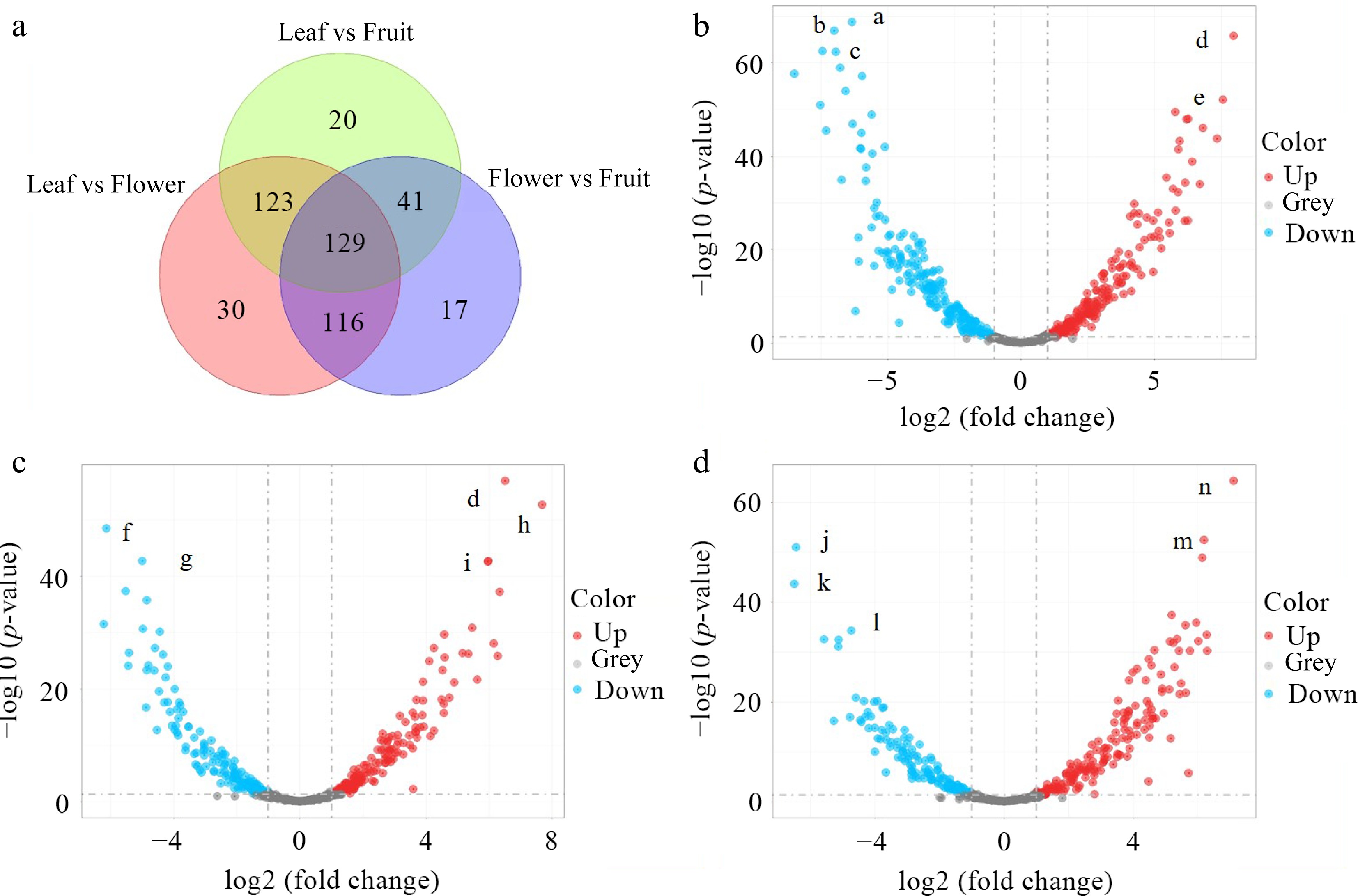
Figure 2.
DAMs among the teas made from the three tissues. (a) Venn diagram of metabolites; (b) volcano plots of DAMs between the leaf tea and floral tea; (c) volcano plots of DAMs between the leaf tea and fruit tea; and (d) volcano plots of DAMs between the floral tea and fruit tea. (a, Genipin gentiobioside; b, His-pro; c, Methyl dihydrojasmonate; d, Vitamin C; e, Yatein; f, 4-Allyl-2-methoxyphenyl 6-O-beta-D-xylopyranosyl-beta-D-glucopyranoside; g, 14,18-Dihydroxy-12-oxo-9,13,15-octadecatrienoic acid; h, Leiocarposide; i, Pyrogallol-2-O-glucuronide; j, 2-Amino-5-[2-(4-formylphenyl)hydrazino]-5-oxopentanoic acid; k, Methyl dihydrojasmonate; l, Senkyunolide H; m, Esculin; n, Dhurrin).
-
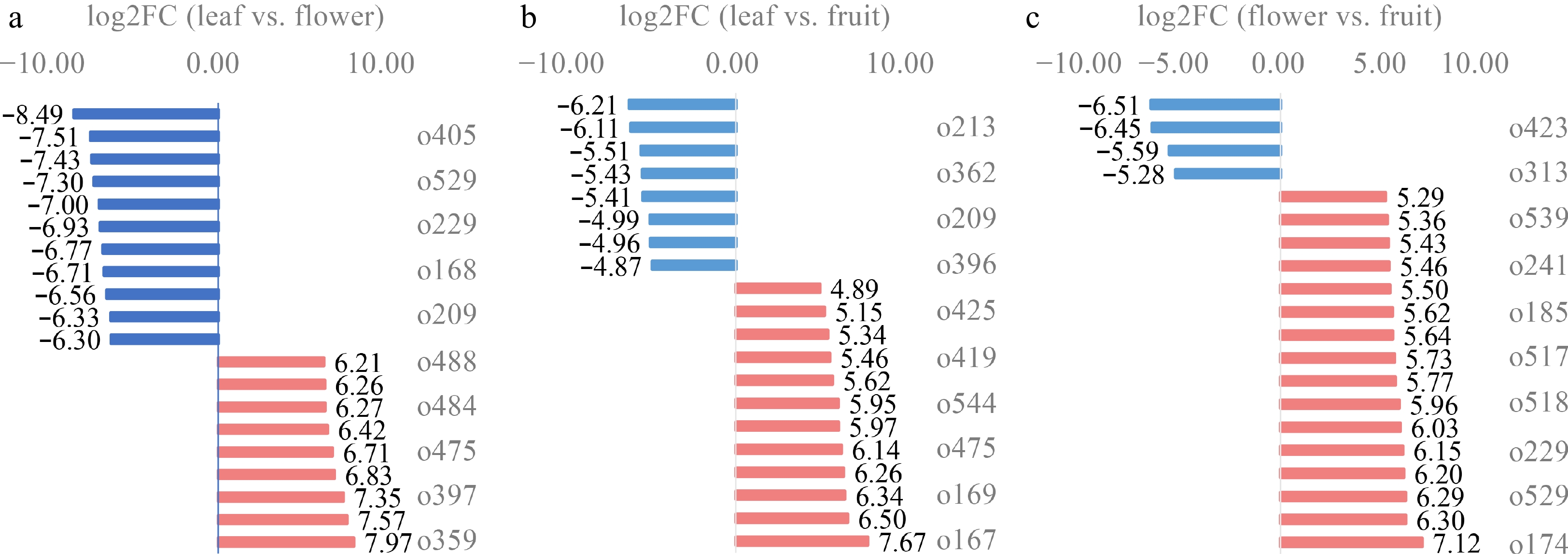
Figure 3.
Fold changes in the top-20 DAMs. (a) The fold change between the leaf tea and floral tea; (b) the fold change between the leaf tea and fruit tea; and (c) the fold change between the floral tea and fruit tea.
-
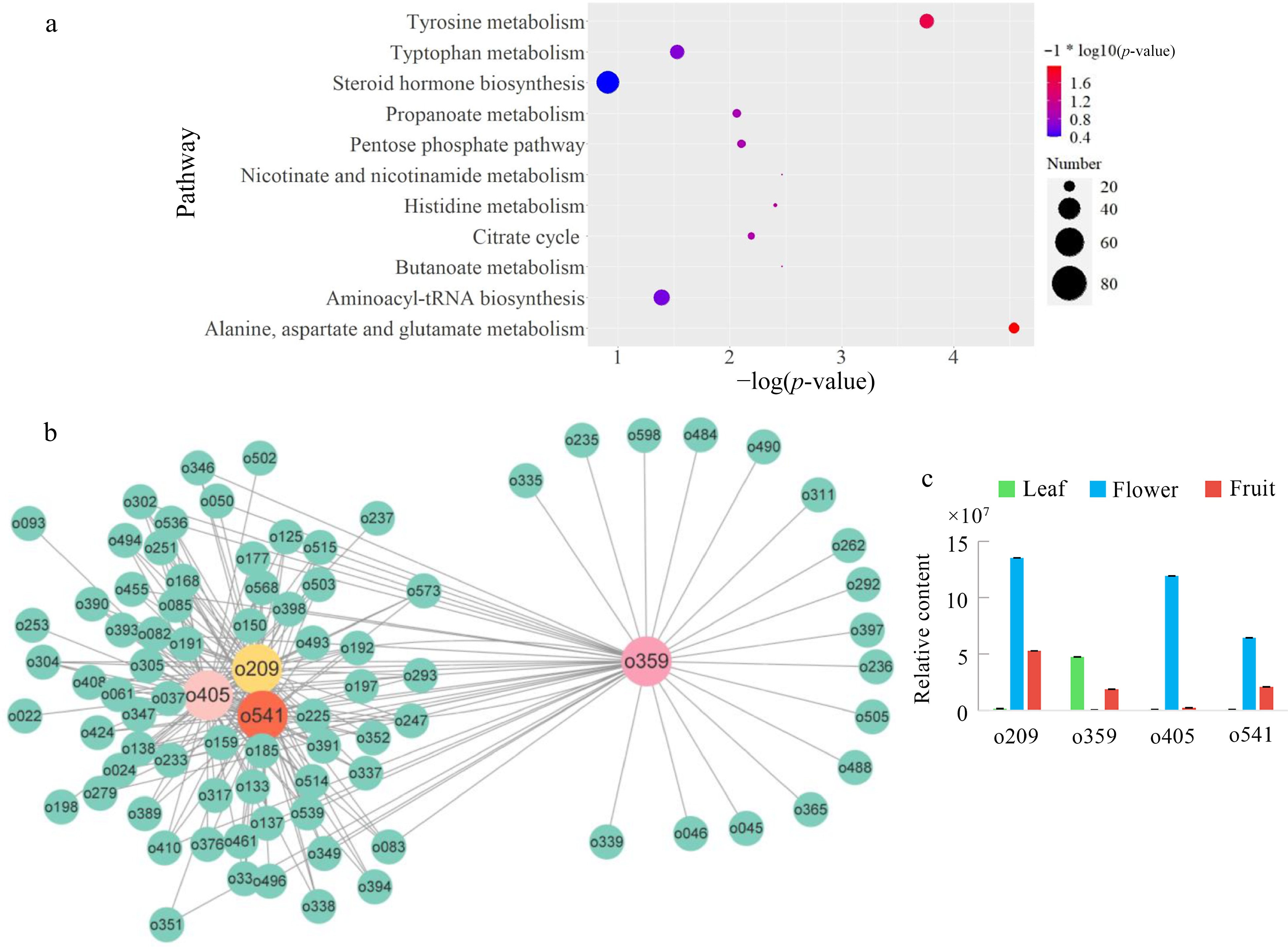
Figure 4.
Common DAMs between the three issues. (a) KEGG enrichment of common DAMs; (b) An interactive network of common DAMs; (c) Comparison of the contents of center DAMs. (o209, His-pro; o405, Gly-Phe; o541, 4,18-dihydroxy-12-oxo-9,13,15-octadecatrienoic acid).
-
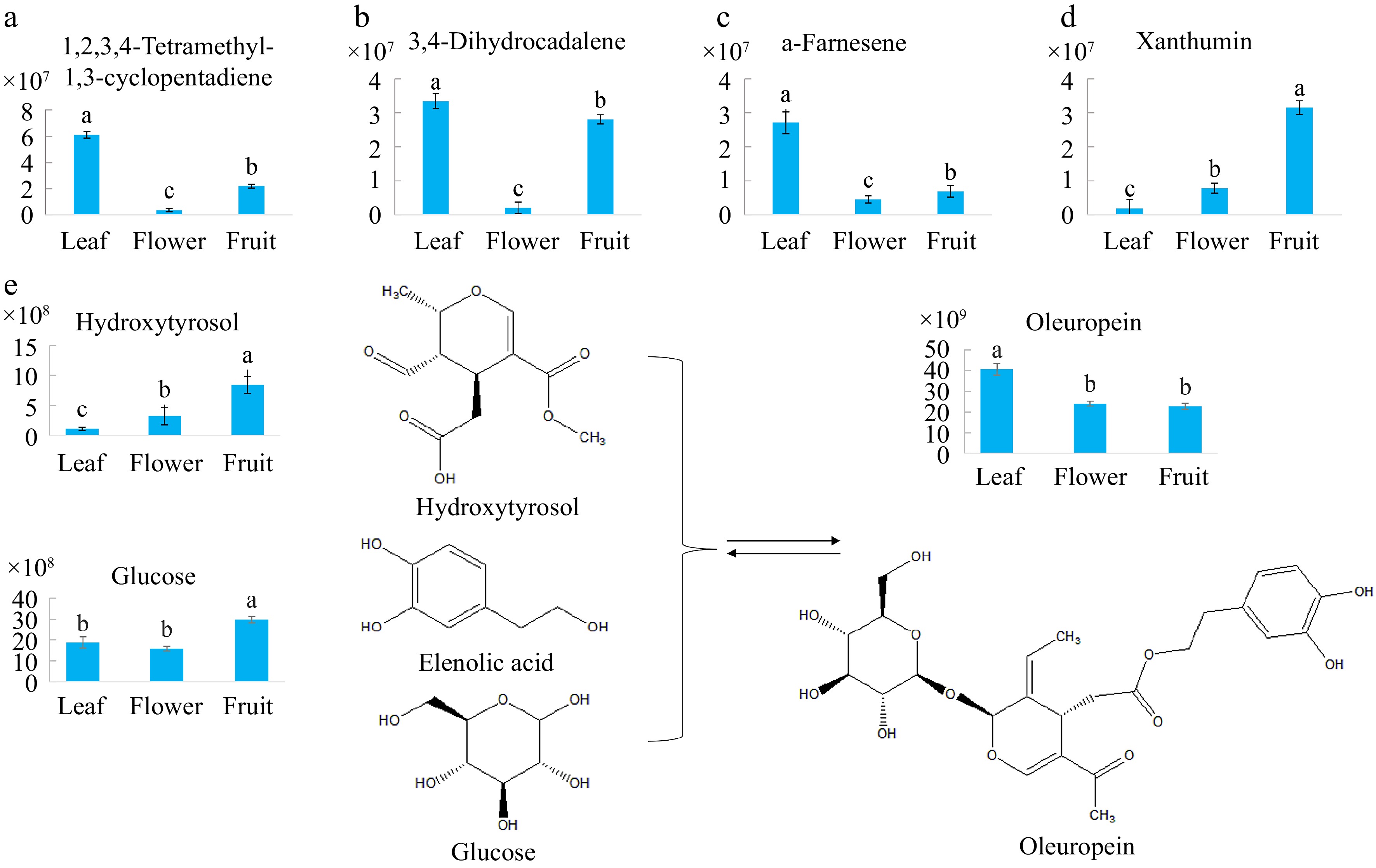
Figure 5.
Comparisons of the contents of representative terpenes and glycosides in olive tea made from the three tissues. (a) 1,2,3,4-Tetramethyl-1,3-cyclopentadiene; (b) 3,4-Dihydrocadalene; (c) α-farnesene; (d) Xanthumin; (e) The principal components in the oleuropein metabolic pathway. Bars with the same lowercase letters are not significantly different based on the least significant difference test.
-
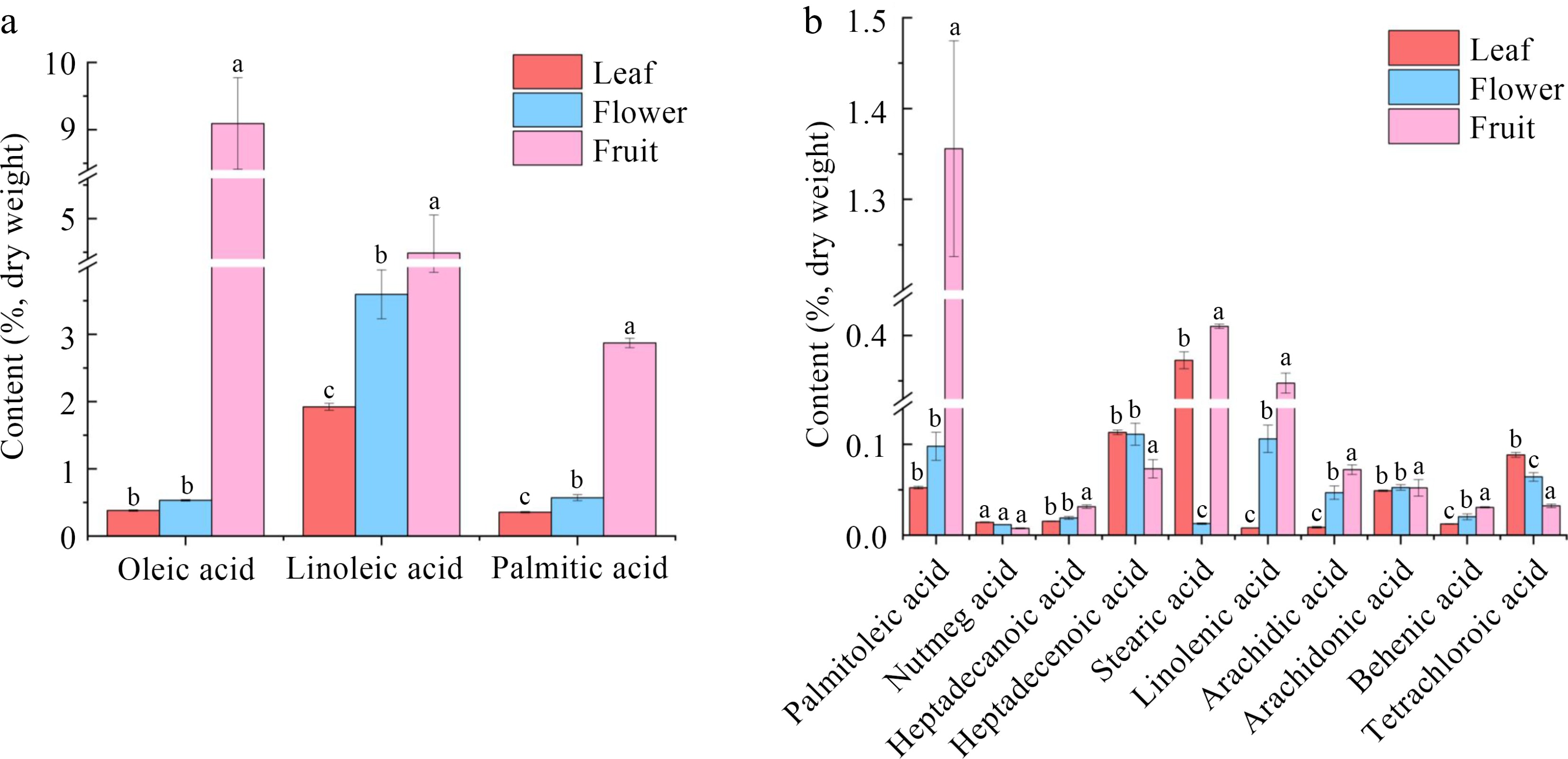
Figure 6.
Absolute quantitation of fatty acids in tea made from the three tissues. (a) Top three fatty acids with the highest content; (b) The rest of the fatty acids.
-
Name Formular Peak area Leaf Flower Fruit Ascorbylglucoside C12H18O11 6E+08 4E+07 2E+08 Leiocarposide C27H34O16 4E+07 3E+06 601326 Phloridzin C21H24O10 2E+07 5E+06 691518 Acanthoside B C28H36O13 3E+07 3E+06 1E+07 Chryso-obtusinglucoside C25H28O12 2E+07 4E+06 9E+06 Genipingentiobioside C23H34O15 7E+07 6E+09 5E+08 Rutinose C12H22O10 7E+05 3E+08 1E+07 Baimaside C27H30O17 2E+08 1E+10 7E+08 Quercetin-3β-D-glucoside C21H20O12 2E+07 9E+08 5E+07 Dhurrin C14H17NO7 5E+05 2E+07 395706 4-Oxo-2-phenyl-4H-chromen-3-yl 6-O-beta-D-xylopyranosyl-beta-D-glucopyranoside C26H28O12 2E+06 2E+07 4E+06 Abietin C16H22O8 2E+07 8E+06 4E+07 4-Allyl-2-methoxyphenyl 6-O-beta-D-xylopyranosyl-beta-D-glucopyranoside C21H30O11 3E+05 1E+06 1E+07 Table 1.
The differentially accumulated glycosides in the olive tea made from three tissues.
Figures
(6)
Tables
(1)